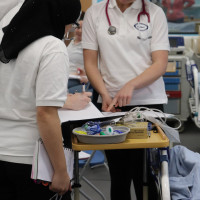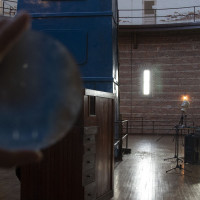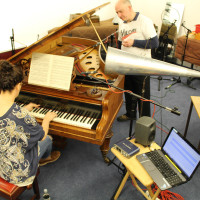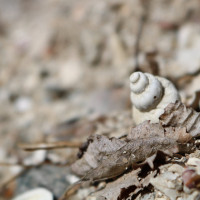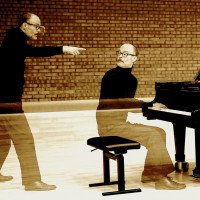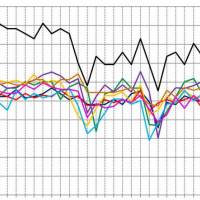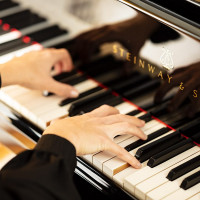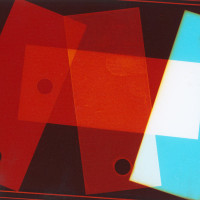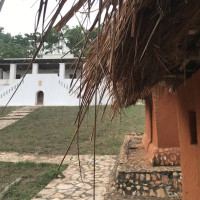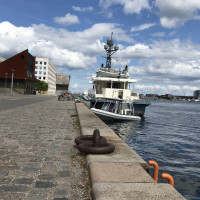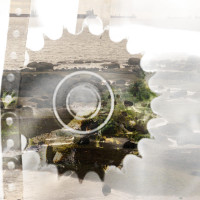Sounds of Science
Research in music, sound art and sound studies is not only a matter of listening and experiencing auditory phenomena. Neither is it limited to the study of scores, graphic notations or sonograms. With the still increasing expansion of practice-based research methods, many artists and scholars of music, sound art and sound studies now gain their knowledge through their creative practice, or through the process of recording soundscapes and various sound experiments such as filtering or editing them. These often inductive processes are comparable to natural science executed in laboratories, where one also can find carefully planned practices leading to new knowledge that could not have been achieved otherwise. It is not only the carefully planned acts that count – so do all the embedded mistakes, unintended turns, unexpected discoveries and unintentional outcomes.
The title “Sounds of Science” of this special issue is not only catchy, it is also a direct reference to such scientific studies. In the 2005 article “The Sounds of Science: Listening to Laboratory Practice” – an anthropological study of a variety of laboratory practices among researchers and engineers working in and around materials science and surface science – the author of the article, Cyrus C. M. Mody, states:
Labs are full of sounds and noises, wanted and unwanted, many of which are coordinated with the bodily work of moving through space, looking at specimens, and manipulating instruments. Sounds are fully woven into the knowledge that emerges from experimental practice. … this article is an invitation to practitioners of lab studies to stage performances of John Cage’s 4’33” at the sites of scientific work and listen to laboratory practice. (176)
Mody invites fellow anthropologists to listen carefully to the (non-aesthetic) sounds emerging in the laboratory, and to produce new knowledge from them – the same way John Cage invited participants to listen to the non-intentional sounds in the concert hall in his canonic silent work. Related research can be found in Pinch and Bijsterveld’s edited volume The Oxford Handbook of Sound Studies (2011), where scholars with backgrounds in history, sociology and Science Technology Studies (STS) reflect on phenomena of sound in laboratories as well as in other professional, everyday and even musical settings. Bijsterveld’s own monograph Sonic Skills (2019) adds extensive insights into the role of the scientist today and historically, and how they relate to sound in their laboratory practices. Further, the anthropologist Stefan Helmreich introduces what he calls “transduced” sounds, when observing and analysing scientists’ experience of mediated sound in underwater settings, by joining them during their work situations in submarines (Helmreich 2007, 2009, 2015).
Some of the papers in the current special issue bear a direct relation to the anthropological and STS inspired work above. Others relate to the John Cage inspired invitation from Mody, but in an almost reverse way: coming from the tradition of the musical avantgarde, these papers produce new knowledge by turning the open aesthetics and aleatoric acts into inductive laboratory processes. The authors of these papers explore and learn from their musical practices, their listening to soundscapes or their recording experiments as if they were taking place in scientific laboratories. Yet another research practice, the emerging field of Sound and Music Computing (SMC), combines an even wider range of scientific methodologies related to sound and music where the music contributes to research practices that are not artistically or musicologically oriented.
Another articulation of interdisciplinary research practice of relevance to this issue is the field of media archeology. Not yet a formalized discipline, media archaeology can be seen as the attempt to resist a focus on the present and the ‘newness’ of new media, and enter into an investigative approach to the understanding of the progression of media. Originally its theoretical understructure was shaped by Foucauldian thinking, but the cultural critic Walter Benjamin and media theorist Marshall McLuhan are other obvious points of reference. With the ever faster development cycles in today’s new technologies, the critical characteristic of media archeology can be seen to have an obvious relevance given present communication technologies. A 20 year old mobile phone may not even register with the contemporary mobile networks, 15 year old media may not play in current media players, and other kinds of technologies and interfaces are growing out of fashion even quicker than that.
With sound as the laboratory the media archaeological investigation is extended even further. Exploring obsolete technology, such as old synthesizers, oscillators and cassette tapes for contemporary artistic practice, may bring forth new invocations. Or, as Huhtamo and Parikka describe it:
[…] these artists create a cyclical motion in a way many media archaeologists no doubt endorse. There is no separation; instead, there is constant interchange, a cruise in time. The past is brought to the present, and the present to the past; both inform and explain each other, raising questions and pointing to futures that may or may not be. (Huhtamo & Parikka 2011, 15)
Media archaeology takes a step back in order to explore media on, so to say, its own premises. As a consequence, prominent as well as less prominent media are brought to life in order to revisit their functions and behaviours, and to gain an understanding of why they came – or why they did not come – to play a dominant role in media history. Along with many other theories, part of the theoretical undercurrents of the attempt by media archeology to rewrite media history are postcolonial studies, the influence of which can also be seen in several of the contributions in this issue.
The perspectives from which the research is performed and analysed differ throughout the contributions in this special issue. Several of the papers are developed from the perspective of so-called “practice-researchers”, discussing empirical work that is both created and analysed by the author. Others explore phenomena created or told by a third person. It is possible, but also slightly naïve, to see a field recording as a representation of an emic perspective, as if it is neutral in relation to that which it represents. Recording technology, however, is nothing but neutral. It invades the thing it records, which is something sound artists have used to their advantage for at least 50 years, but also something that needs to be considered in ethnographic research. The very format of the audio paper is a stage for exploring the range of possibilities with recording as a method: a means of representing and positioning several voices, and as a tool for documentation.
While the contributions differ in their perspectives, and in theoretical and methodological approaches, they share the principle that all the researchers authoring these articles and audio papers have gained their knowledge directly from the sonic material they work with, whether it is a piano tune, an interview, a field recording or an old gramophone.
***
With their audio paper Leaky knowledge: listening between bodies, technology and learning, Salomé Voegelin & Mark Peter Wright make this point very obvious. The recorded bodily sounds may be understood obviously, when listening, as the sound of lungs. But they also lend themselves really well to acousmatic listening: a completely ordinary sound from a human body is recorded and, without any treatment, creates an interesting sonic experience. At the same time, listening to the body allows the medical practitioners in the audio paper to see the body in a new and different way.
The art duo Coppice (Noé Cuéllar and Joseph Kramer) capture the sound of mechanical technologies at the Yerkes Observatory in Williams Bay, Wisconsin just before and after more than 100 years of operation (it ceased in 2018). With reference to media archaeology theories, the audio paper Stewardship to obsolescence and preservation: listening to specimen music through Yerkes Observatory’s refractor and reflector telescopes is a “self-reflexive documentary experiment of music and phonography, obsolescence and preservation”, exploring, representing and reframing the status of the laboratory while vanishing.
In their article A chip off the old Block? Introducing the practice of historically-informed recording, Inja and Adam Stanović delineate a media archaeological practice addressing the work done by one of the pioneers of recording some 130 years ago. Their insights shed light on the necessity of a broad understanding of all the material at hand when exploring the early practice of musical audio recordings. This is historically-informed research. The ethnographical aspect of the study, in relation to the history of recording technologies, may also be used to inform the way in which musical cultures other than our own are understood. There is no doubt that the ability to record music in the field of music ethnography was a turning point for music ethnographers.
Fleshy listening and multi-entity performance is an audio paper by the artistic researcher and violinist Halla Steinunn Stefánsdóttir, giving insight into the development of a collaborative sound work having the novel Tapeshavet (2017) by the Swedish author Gunnar D. Hansson as the key inspiration. In the paper we witness careful discussions during the artists’ performative interaction with a given environment serving to develop and illustrate the notions of fleshy listening and multi-entity performance. The audio paper also opens a perception of the artistic work as an ecological process.
Ulf Friberg, Carl Holmgren and Stefan Östersjö’s audio paper Lost in interpretation: re-mixing the master-apprentice relation in the music conservatoire also focuses on collaboration, this time within the educational institution and the complicated and much questioned master-apprentice relationship in higher music education. The master class is taken as the point of departure, partly investigated through artistic research methodologies and partly through the staging of a Hörspiel by Holmgren.
In the article Seismograms of a musical work: freedom and constriction in piano performance Alisa Yuko Bernhard uses existing recordings as the main material of her comparative study of time deviations in specific sections of piano music. Using recordings of legendary pianists she draws tempo graphs of their interpretations. She compares the much studied performance-work relationship theoretically with Fichte’s model for self-consciousness and points to the independence of the performance from the work.
Kent Olofsson and Francisca Skoogh’s audio paper Play always as if in the presence of a master is related to this topic as it departs from the psychological understanding of the act of performing (piano) music. Critically examining perfectionism in classical music, they describe the process of creating a new piano work by Olofsson, departing from Sonata op. 11 by Robert Schumann.
If Olofsson and Skoogh’s project was collaborative, Ilya Ziblat’s audio paper A fundamental mode of being in the world: improvisatory paths as a principal creative paradigm is explicitly about collaboration. Ziblat takes a wide view of the practice of improvisation which he sees as a fundamental mode of being in the world. The possibilities that improvisation affords us here are used as a constructive and creative force in the production process in the studio. Working with sound from improvisations, his audio paper unfolds his creative process from within and against a backdrop of music.
Touching upon the need to use recording technology sensibly in the design of decolonized research methods, Lene Asp and Mikkel Meyer’s media archeological project attempts to use digital media to create dialogical narratives, in opposition to the “often mono-directional and fixed national/Eurocentric points of view in Western historiography”. If instead the historiography is continuously renegotiated, as Asp and Meyer claim in their audio paper History as composition: colonial (dis-)appearances through reconstructed sites and sound, a process can be carried out through sound – similar to how the understanding of the body may be renegotiated through the sounds it produces – that deconstructs monophonic and centralized perspectives.
Carla J. Maier’s audio paper Towards an ethics of listening: sonic research and postcolonial sensibilities also touches upon postcolonial issues through sonic and sensorial engagements. Maier takes her point of departure in an audio walk she created in 2019 for the much discussed public monument I am Queen Mary in Copenhagen. From her experiences with this production, Maier argues that editing and listening to field recordings can serve as methods in the process of rewriting and desentagling postcolonial histories.
Situated in the theories of R. Murray Schaffer, the audio paper Soundscapes as archives: traces and absences of the aural past in Vancouver by Jacek Smolicki and Candace Campo is concerned with a soundwalk composition developed in 2020 in Vancouver. Taking a postcolonial perspective on the history of British Columbia, the essay offers an almost psychogeographical take on how the sonic traces of the past may reflect what is still here and what is gone. Sound, in this case, is a carrier of information, the content of which is being extracted through an artistic work.
The final audio paper The generation of a [multi’vocal] voice, by The [multi’vocal] collective, addresses one of the more pressing issues of the coming years regarding the use of sound: the ways in which AI may transform both sound and music which are yet to be seen. There is therefore an urgent need to engage in this topic from a number of different angles. In this audio paper the authors explore how the synthetic voice can be reimagined and suggest a “paralinguistics of synthesized voices” to promote diversity and surface biases.
***
“Sounds of Science” is the result of Seismograf Peer’s first open call. The 12 publications we present here are carefully selected out of the total 21 initial submissions, in a process where blind peer review of each submission have played an important role.
The open call was initially developed from the seminar “The Aesthetic Expression of Musical Research” held in regie of the Sound Environment Centre (Lund University) in collaboration with The Royal Swedish Academy of Music (Stockholm) and The Royal College of Music (Stockholm).
Our deepest thanks go to all the fabulous creative contributors, published and non-published in this issue, and to our peers and other collaborators, who have made this publication possible.
***
Bibliography
Bijsterveld, K. (2019) Sonic Skills: Listening for Knowledge in Science, Medicine and Engineering (1920s-Present). 1st ed. 2019. [Online]. London: Palgrave Macmillan UK.
Helmreich, S. (2007) An Anthropologist Underwater: Immersive Soundscapes, Submarine Cyborgs, and Transductive Ethnography. American Ethnologist , Nov., 2007, Vol. 34, No. 4, pp. 621-641.
Helmreich, S. (2009) Alien Ocean : Anthropological Voyages in Microbial Seas (Reprint 2019). University of California Press. DOI: 10.1525/9780520942608.
Helmreich, S. (2015) Sounding the Limits of Life: Essays in the Anthropology of Biology and Beyond. Princeton: Princeton University Press.
Huhtamo, E. and Parikka, Jussi (2011) Media Archaeology: Approaches, Applications, and Implications, Berkeley: University of California Press.
Mody, Cyrus C. M. (2005) The Sounds of Science: Listening to Laboratory Practice. Science, Technology, & Human Values, Vol. 30, No. 2, Spring 2005, pp. 175-198. DOI: 10.1177/0162243903261951.
Pinch, T. J. & Bijsterveld, K. (ed.) (2012) The Oxford Handbook of Sound Studies. Oxford: Oxford University Press.
All articles and audio papers have been through blind peer review and were copyedited by Andrew Mellor before publishing.
